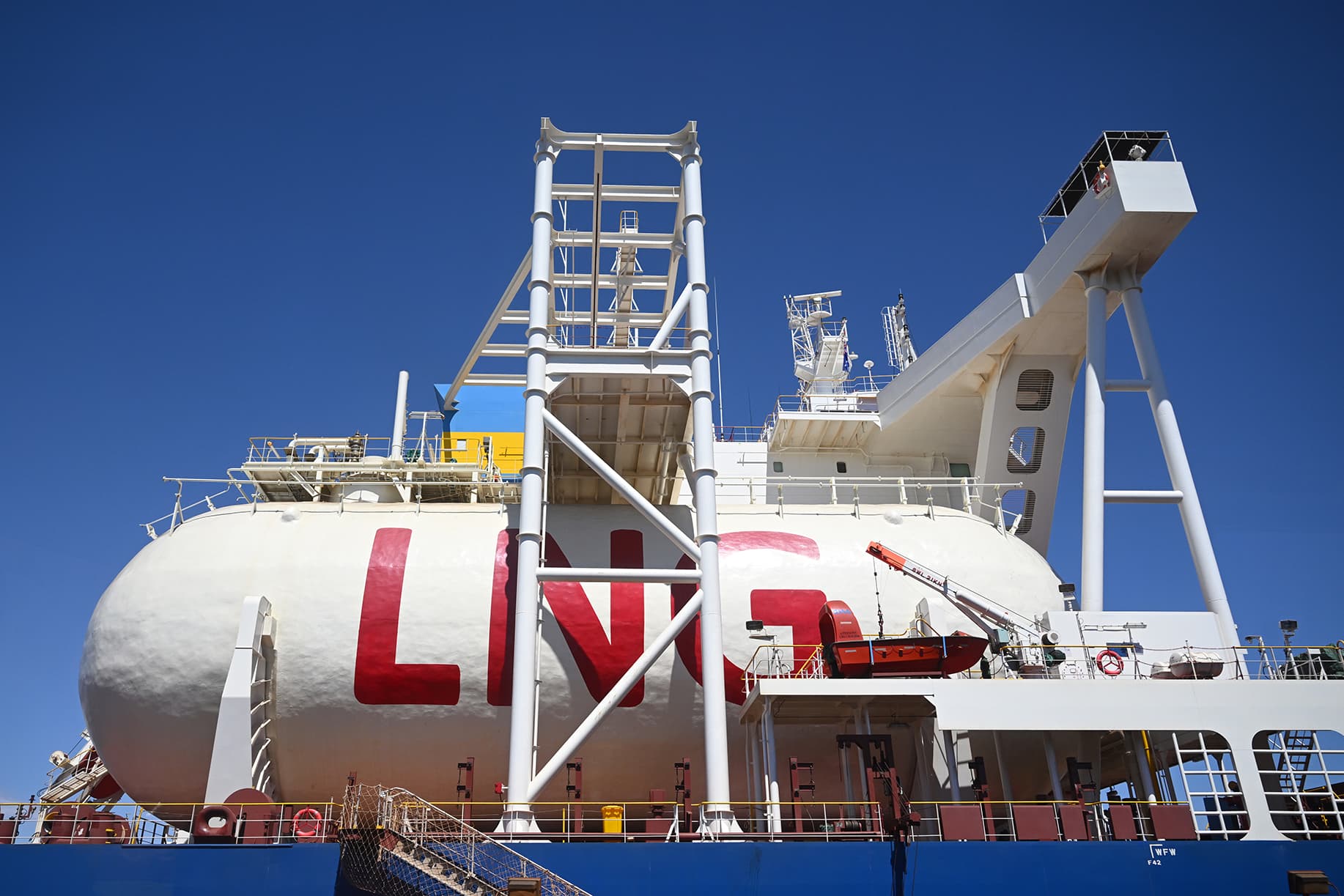
Wed 29 Oct 2025 14.00

Photo: AAP Image/Lukas Coch
One pro-gas talking point you will hear close to every single week is the idea that Australian fossil gas exports are bravely and heroically helping Asia decarbonise, by providing a less-polluting alternative to dirty coal.
Helpfully, this completely absurd talking point has been debunked an eye-watering number of times. One very funny example of this is the time Australia’s biggest gas company, Woodside, asked the CSIRO to analyse whether gas exports cut emissions overseas, and because the CSIRO found out they don’t, the report got buried in a drawer.
As the Australia Institute’s Stephen Long wrote:
“The CSIRO found that, in the absence of a high global carbon price, increasing Australia’s gas exports to Asia would be likely to deter and delay the shift to renewable energy”
Ditto for one of the last reports released by the Biden Administration in the US, which found that “increased gas exports mean higher global greenhouse gas emissions, with the [Department of Energy] determining that gas exports lead to higher overall emissions as they are more likely to displace global investment in renewable energy rather than replace coal”.
The assumption that gas is ‘always cleaner’ has been challenged, too. Shipping gas overseas by compressing it requires an absurd amount of energy, and consequently a high volume of greenhouse gas emissions. In many cases, this can end up worse than coal when you consider the whole lifecycle, and even when it isn’t worse, it’s not that much better. The International Energy Agency’s own analysis has to admit that the range is for LNG being somewhere between 75% to 84% as bad as coal, for climate – and that is as skewed as possible in gas’ favour. Other analysis finds that burning fossil gas shipped from elsewhere in a liquefied state ends up being horrifically worse than coal, for the climate.
We can also tackle this question in a relatively simple way. What happens to the power grid, for the countries that are the main customers of Australia’s bloated fossil gas export industry? Are they seeing wild, rapid and unstoppable greenhouse gas emissions cuts as coal gets deleted overnight from their power grids?
First, let’s check which countries are Australia’s main gas customers. You can get a nice overview of those regions in the government’s latest resources report:
Japan, China, South Korea, Taiwan and India are the core destinations for Australia’s gas exports. It is relatively easy, then, to check in on their power grids to see which, if any, are switching from coal to gas and cutting their emissions in the process.
After the Fukushima disaster in 2011, Japan mostly quit its nuclear power fleet, and only a small amount has returned. Japan has seen a noticeable decline in total power consumption, but it is using roughly the same amount of coal on its grid as prior to its nuclear shutdowns. Coal is now a larger proportion of Japan’s grid than it was 15 years ago. Gas has completely failed to push coal out.
It is worth noting that while Japan is one of the most cited countries in the narrative of Australia’s gas exports, it actually on-sells a massive chunk of purchased gas to elsewhere in the world.
In 2024, China generated ten times as much electrical power from non-fossil sources (nuclear, hydro, wind and solar) as it did from gas. Since 2014, gas has grown 1.2x. But solar grew 34x, and wind grew 5.2x. While China is finally on the cusp of reducing its coal consumption and has already plateaued it, that is entirely down to the deployment of wind and solar in the country, not gas.
Not only is China not using Australian gas to displace coal, it is using wind and solar to first cap coal output, and hopefully soon, see it fall. Remember that China is one third of Australia’s gas exports.
Being as generous as possible, Korea is the closest we are going to get to finding a grid that’s even partially replacing coal with gas in this list, but the effect is barely visible. Coal has fallen from its peak in 2017, but that has mostly been replaced by significant solar growth and increased nuclear power output. Gas output has risen too, but not as fast as nuclear.
This also illustrates something important: replacing coal with another fossil fuel results in far slower emissions cuts than replacing it with non-fossil technologies like wind and solar.
Somewhat similarly to Japan, Taiwan has seen notable increase in gas use on their power grid, but that’s mainly to meet growing new demand and also to replace their dwindling nuclear power sector. Coal has barely budged. The net result is that Taiwan’s total emissions have increased in the past few years:
This reminds me very much of the United States, where the explosion of cheap gas worked actively to suppress the growth of wind and solar by offering a worse-polluting but more-accessible alternative. The net effect is a massive increase in emissions.
While India is a small fraction of Australia’s gas exports, it is still sometimes cited as the reason we need to expand gas production.
As you can see, India is not using gas to get rid of coal. Like China, total power demand is growing fast, but unlike China, India is meeting most of that growth using coal.